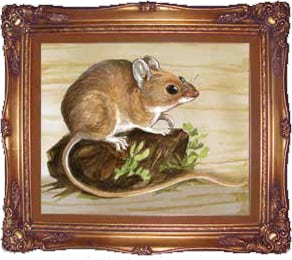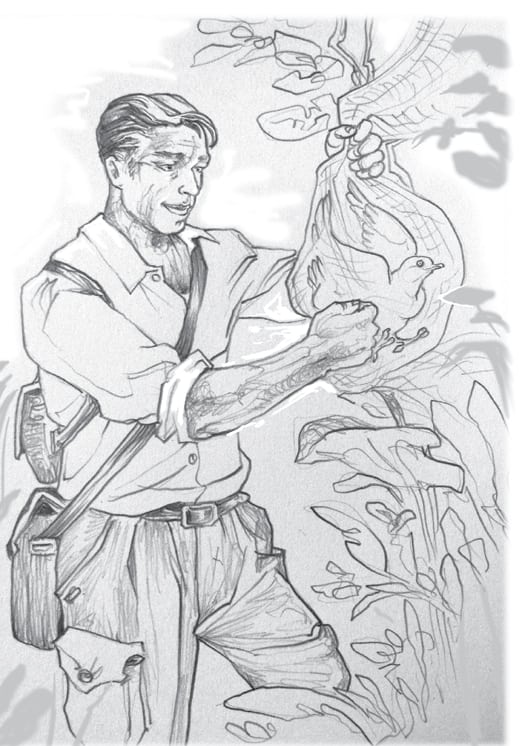Robert Charles Wroughton is among the many British naturalists who did exemplary work documenting Indian fauna, particularly the taxonomy and systematics of rodents and bats. What is most impressive is that he took up this task after retirement and kept at it till nearly the end of his life.
IMPERIAL FOREST SERVICE
Wroughton was born on 15th August, 1849 in Naseerabad, in what is today the province of Baluchistan in Pakistan. Little is known of his personal life. His father, Major General R C Wroughton, was also a naturalist and a keen sports person, from whom he might have inherited his interest in natural studies. Wroughton’s childhood was spent in India, where he developed an early interest in natural history. He was then sent to England for his schooling in Bedford, followed by higher education in King’s College, London. He further trained in forestry at the L’Ecole Forestière in France. In 1871, he returned to India as the Assistant Conservator of forests in the Imperial Forest Service.
EARLY CONTRIBUTIONS TO NATURAL HISTORY
Wroughton’s interest in the natural world began with the order Hymenoptera, comprising ants, bees and wasps. He collected numerous specimens of ants while in service and sent them to renowned Swiss myrmecologist Auguste Forel. Under Forel’s guidance Wroughton not only identified ant species but also studied their social life.
On a trip to England, he approached Reginald Pocock who headed the arachnid section at the British Museum (Natural History), South Kensington, London, with a view to studying scorpions. He provided Pocock with specimens of scorpions and myriapods from India during that time. From these collections, Pocock described a new species of scorpion in 1899 and named it after Wroughton—Heterometrus wroughtoni. Although an authority on arachnids at the time, Pocock had become interested in mammals and encouraged Wroughton to focus on mammalogy, particularly the study of little known small mammals.
CONTRIBUTIONS TO MAMMOLOGY
On returning to India, in 1897-1898, he collected several specimens of bats in the districts of Surat and North Konkan. While most of these specimens were described by Oldfield Thomas, who headed the Mammals section at the British Museum (Natural History), Wroughton also examined a few and published his first paper titled ‘Some Konkan Bats’ in the Journal of the Bombay Natural History Society in 1899. He credited Thomas with encouraging him to undertake his first attempt at systematic zoology.

It was only after this first effort that he gained confidence in his aptitude to be a mammalogist. Following this, he wrote several papers on rodents that he had collected during his stint in Konkan. He also published detailed notes on several rodent genera such as Mus, Bandicota, Tatera and Micromys. He was also the first to describe the fivestriped palm squirrel Funambulus pennanti in 1905. In this paper, he stated that both the threestriped and five-striped squirrel were originally considered a single species called Funambulus palmarum. Wroughton however found two individuals within half a mile distance of one another on the north bank of River Tapti and felt that the two were distinctly different in the number of stripes on the back and a few other characteristics. He studied several specimens of these in the national collection at South Kensington and was certain that they were actually two different species. There was one with three distinct stripes and another with an additional faint stripe on either side. He named the latter Funambulus pennanti and suggested that this species had its distribution in north India.
SURVEY OF MAMMALS IN INDIA
After retirement, Wroughton returned to England and focused on specimens of mammals from Africa, as collections from India were slow to arrive. Although collections poured in from Africa giving him much work, Indian natural history was his obsession. He tried very hard to persuade his friends to send him specimens. Although a few rodents arrived in this way, it was far from the larger plan he had envisaged. He believed that, although many eminent natural historians had explored India well in the early 1800s and described many species, their notes were inadequate. Most naturalists focussed only on salient characters, mainly at the generic rather than at the specific level, particularly with regard to small mammals like bats and shrews. In order to address this problem, Wroughton proposed a massive and exhaustive survey of mammals throughout India, by hiring paid naturalists to do the collections. Most people were against such an idea at that time as they felt that natural history collections ought to be done out of interest rather than for money. However, Wroughton believed that his scheme would get a greater number of people involved in such work. He convinced W S Millard, the honorary secretary of the Bombay Natural History Society (BNHS) to help him. The survey was intended not just to describe species in meticulous detail but also to differentiate characteristics of populations in different geographic regions of the country. It would revise systematic zoology and make it more precise. BNHS organised funds for the task and began the long hunt to find people for the job. Fortune turned when finally in 1911, Mr C A Crump arrived in Bombay and offered his services to the BNHS. He started some of the earliest collections from northwest Maharashtra. Within a year of this event, more people joined the mammal survey.

The First World War in 1914 stopped work briefly but the work soon continued with other eminent naturalists such as Stanley Prater joining the survey. The survey went on till 1923, two years after Wroughton’s demise. Nearly 25,000 specimens were collected from all parts of India over the course of 13 years and sent to the British Museum to be sorted and catalogued by Wroughton, resulting in 33 articles. By the age of seventy he had completed summaries of almost all the years of the survey and had described a total of 200 species of rodents and bats including the Cutch rock rat (Cremnomys cutchicus) and Wroughton’s wood mouse (Apodemus wardi).
Ninety of the specimens at the British Museum (Natural History) were brought in by Wroughton and some such as the Wroughton’s free-tailed bat (Otomops wroughtoni) were named after him in recognition of his work. In 1921, at the age of 72, R C Wroughton died in England. He was known to be a keen, energetic and robust person, endearing to all his acquaintances. He was perhaps best described by his friend and collaborator Oldfield Thomas who wrote in Wroughton’s obituary that he was very humble and modest about his accomplishments and preferred to stay away from the scientific society of London.
Suggested reading:
Robert Charles Wroughton. Bombay Natural History Society’s Mammal Survey of India, The Journal of the Bombay Natural History Society.1912-1916. Vol. 22(1) -24(4).






